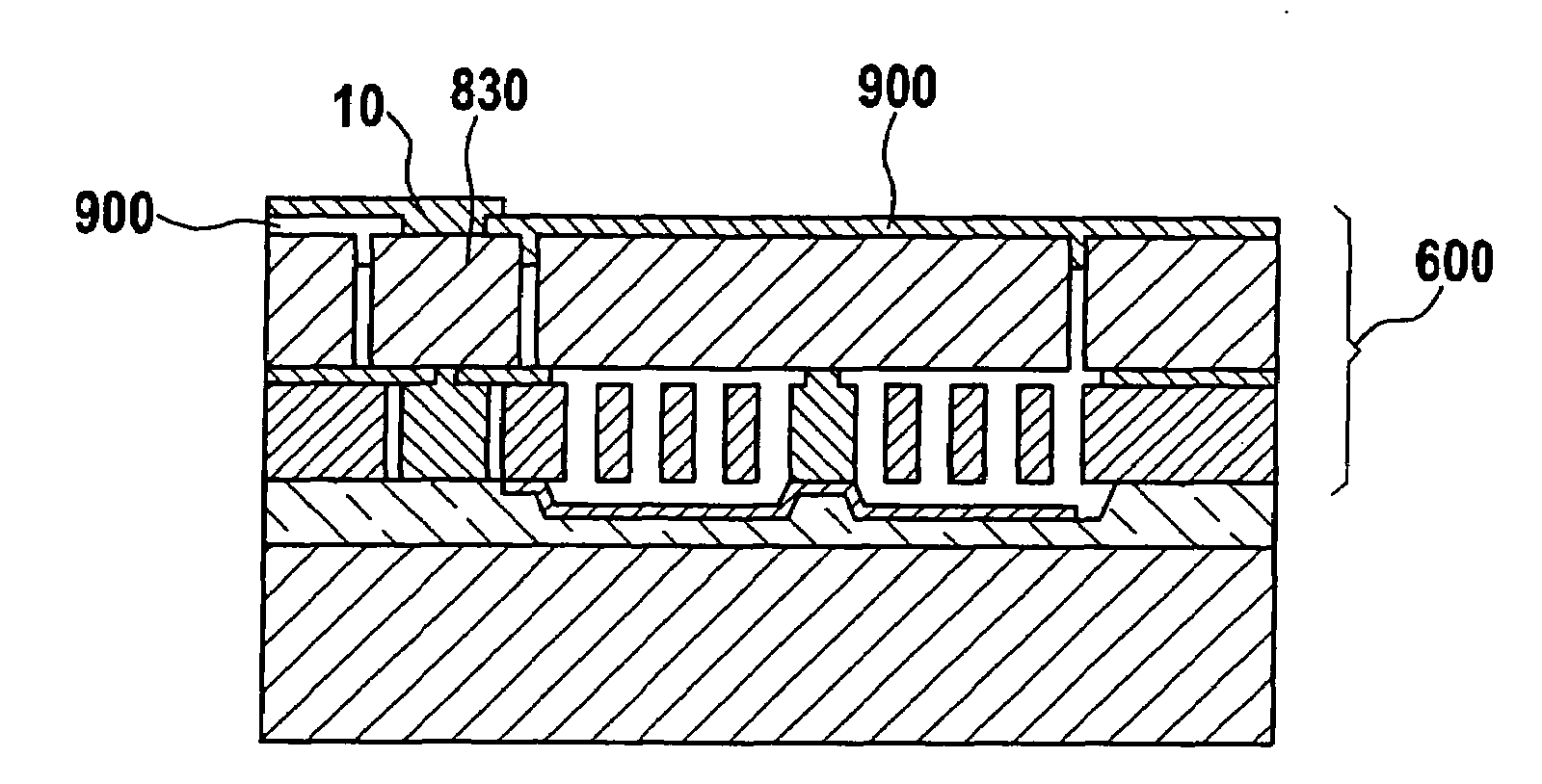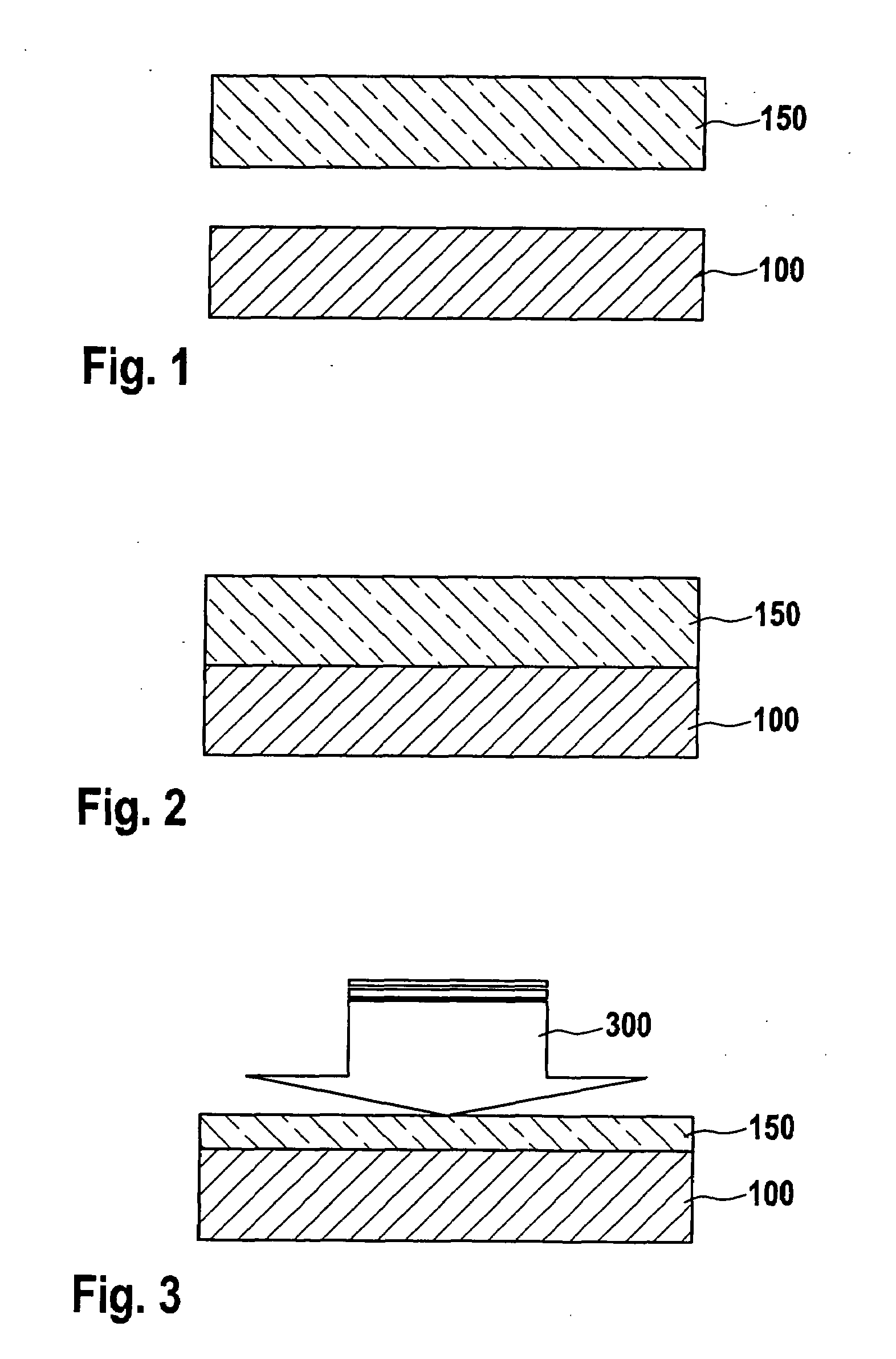Micromechanical Component Having Multiple Caverns, and Manufacturing Method
a micromechanical component and manufacturing method technology, applied in the direction of fluid speed measurement, instruments, coatings, etc., can solve the problems of monolithic micromechanical sensors and the associated evaluation circui
- Summary
- Abstract
- Description
- Claims
- Application Information
AI Technical Summary
Benefits of technology
Problems solved by technology
Method used
Image
Examples
Embodiment Construction
[0033]FIG. 1 shows the preparation of a substrate and a glass for the manufacture of a cap. A cap substrate 100, which in this example is made of silicon, is disposed and aligned with respect to a glass 150. Glass 150 is made of Pyrex in this example. For joining, cap substrate 100 and glass 150 must exhibit a suitable roughness on the surfaces facing one another.
[0034]FIG. 2 shows the joining of substrate 100 to glass 150. The joining is accomplished, for example, by way of the technique of anodic bonding.
[0035]FIG. 3 shows the thinning of the glass layer. Thinning action 300 of glass 150 is accomplished by grinding and chemical-mechanical polishing (CMP). The result is to produce, in this example, a glass layer 150 having a thickness of approx. 50 μm.
[0036]FIG. 4 shows the production of recesses in the glass. Recesses 400 in glass 150 can be produced, for example, by a buffered oxide etch (BOE) method. In the example shown, recesses 400 have a depth of approx. 5.5 μm. Provision ca...
PUM
| Property | Measurement | Unit |
|---|---|---|
| pressure | aaaaa | aaaaa |
| pressures | aaaaa | aaaaa |
| pressure | aaaaa | aaaaa |
Abstract
Description
Claims
Application Information
 Login to View More
Login to View More - R&D
- Intellectual Property
- Life Sciences
- Materials
- Tech Scout
- Unparalleled Data Quality
- Higher Quality Content
- 60% Fewer Hallucinations
Browse by: Latest US Patents, China's latest patents, Technical Efficacy Thesaurus, Application Domain, Technology Topic, Popular Technical Reports.
© 2025 PatSnap. All rights reserved.Legal|Privacy policy|Modern Slavery Act Transparency Statement|Sitemap|About US| Contact US: help@patsnap.com



